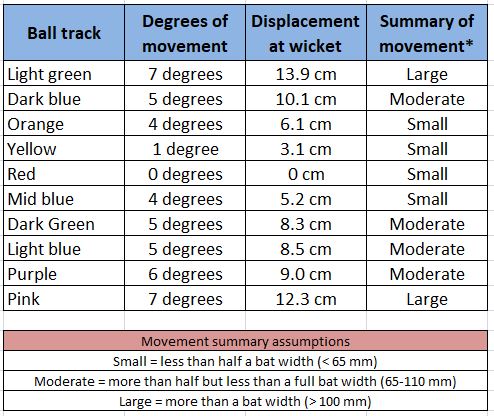We wanted to answer the question: How far does the ball deviate from the TurfTop mat?
To find the answer we rolled out a TurfTop mat over a standard artificial grass wicket, and then fired balls at it from a stationary bowling machine. After filming with a high speed camera, we used a computer to track the movement of each ball, including how it bounced off the pitch.
We then superimposed all of the ball tracks onto each other, and used Kinovea software to analyse the degree of deviation, and also the displacement of the ball at the wicket, compared to if it had traveled straight.
From our sample of 10 deliveries the results show:
- 40% of balls continued through fairly straight - i.e. they moved less than half a bat width off the pitch.
- Another 40% of balls deviated moderately after hitting the TurfTop mat - by about a bat width.
- Two out of those 10 deliveries (20%) deviated a long way - more than a bat width.

So the answer to our question "How far does the ball deviate from the TurfTop mat" is this: some balls will move just a little, some moderately, and every now and then a delivery will seam a long way - just like on a naturally variable pitch with a new ball.
Note that the deviation varies according to the surface upon which the TurfTop mat has been placed.
- If the TurfTop is laid over a hard surface such as concrete then the ball will deviate further.
- If the TurfTop is laid over a soft surface such as thick new artificial grass then the deviation will be less.
- The results shown above are when the TurfTop was laid over a reasonably well-worn artificial turf wicket that is typical of the practice facilities of most cricket clubs.
In summary, our data shows that by using the TurfTop mat rather than a flat uniform artificial pitch, cricketers can refine their technique against a moving ball, and be ready for the challenge that awaits them on a naturally variable turf pitch.
And score more runs!